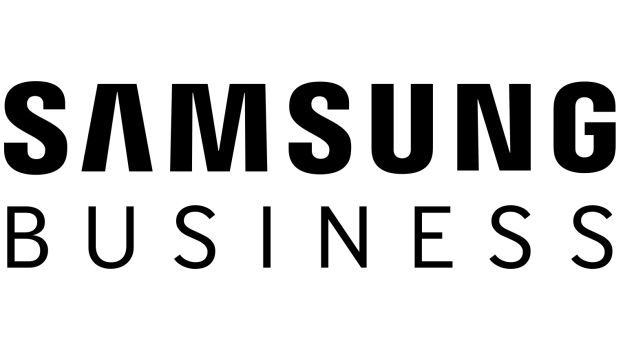Samsung’s partner ecosystem includes about 13,000 active channel partners.

 **Editor’s Note: Click here for a list of February’s important channel-program changes you should know.**
**Editor’s Note: Click here for a list of February’s important channel-program changes you should know.**
Samsung Business has stepped up investment in its partners through new a professional training system and marketing services. The company wants to drive a more consistent message.
 A division of Samsung Electronics of America (SEA), Samsung B2B takes a vertical approach to the enterprise market, with a focus on key industries including: health care, hospitality, education, retail, financial services and government.
A division of Samsung Electronics of America (SEA), Samsung B2B takes a vertical approach to the enterprise market, with a focus on key industries including: health care, hospitality, education, retail, financial services and government.
Its partner ecosystem includes about 13,000 active channel partners. The Samsung Team of Empowered Partners (STEP) program encompasses its B2B partners.
New to the partner program this year are Marketing Concierge Services, which expand on existing support provided through STEP. Through third-party marketing platforms, partners receive help with planning, execution and reporting of co-branded marketing campaigns.
In addition, Samsung Business Academy is a new training and certification program to help partners gain certification based on advancing their business knowledge. The training system will launch in the first half of this year and will be integrated into the current Web-based STEP portal, with mobile support coming in the second half of the year.{ad}
 In a Q&A with Channel Partners, Greg Taylor, vice president of channel sales for Samsung’s B2B business, and Richard Hutton, director of demand generation and channel marketing, talk about rapid growth in the enterprise market and increasing partner enablement.
In a Q&A with Channel Partners, Greg Taylor, vice president of channel sales for Samsung’s B2B business, and Richard Hutton, director of demand generation and channel marketing, talk about rapid growth in the enterprise market and increasing partner enablement.
Channel Partners: What roles do partners play in the B2B go-to-market strategy?
Taylor: For all intents and purposes, Samsung B2B business is 100 percent channel focused. We do all of our revenue back through one of our channel partners. A large percent[age] of our sales will start with one of our distributors. We’re involved with the majority of the broadline and many of the specialty distributors across the United States, which then in turn provide sales and support, logistics and financing for all of our channel partners.
Across the whole product line, the majority of the product goes through channel. There are rare instances with our hospitality TV line where a large property may make a direct purchase, but outside of that, the mainstay of all of our business goes through one of our channel partners and a majority of it goes through one of our distributors.
Many of the partners sell …
Take our Channel Compensation Survey now! You’ll be eligible to win a $100 Amazon gift card. |
{vpipagebreak}
… multiple product categories, and so they’re cross-selling across our entire Samsung product line, building solutions that wrap around Samsung. Of those 13,000 channel partners, they really range the broad gamut of who’s who within the IT sales field.
Hutton: Since we launched our STEP program nearly five years ago, the number of solution providers actively selling our products on an annual basis has grown by 37-38 percent.
CP: Can you give some examples of the roles partners play in Samsung’s vertical approach to the enterprise market?
Taylor: The B2B division within SEA is focused solely on selling to businesses for business use. Now, I will say that some of our products do cross over between the two divisions. So our products aren’t always 100 percent unique on the B2B side. An example of that would be our Galaxy tablets. Today we might sell the same products at a Best Buy or Amazon that we sell on the commercial side through one of our commercial channel partners, like CDW, PC Mall or TIG. While the product is the same out of the box, the experience then becomes very different. From the B2B side, our channel partners will turn that product into something else and that will be a solution of some kind, whether it be for clienteling, where they’re interacting with customers and have a POS solution loaded on it, or it be may be used for guest management among a large theme park.
CP: Were the STEP program enhancements based on partner input?
Hutton: We do an annual partner-satisfaction survey; we actually have a third party do it so it’s not just “hey, tell us how much you like us.” We typically do that in the Q3 time frame so it helps inform the following year’s strategy. And these two investments definitely came from the partner-satisfaction survey. They want a better informed and trained sales force because that increases the value of the solution sale. So it’s not just in Samsung’s best interest; it’s in the partner’s best interest and they recognize that. They want to be better at marketing; they don’t have the time or investment dollars to go put a platform in place to really take advantage of that messaging ability, so they’re looking to partners like Samsung and that’s what we’ve done.
The marketing automation is there for anybody to use; you have to sign up in our program to use it, and then the concierge services is an extra layer on top of that where we’re doing some personal work with some of our more strategic partners.
CP: What is your B2B go-to-market strategy?
Taylor: We’ve been very focused on a vertical approach when we go to market, and so we don’t talk about …
{vpipagebreak}
… speeds and feeds, we don’t talk about display or print. While we’ll gladly take an order for 1,000 of something, our communication and how we engage is more on a vertical-market perspective. At our executive briefing center here in New Jersey, we’ve actually built out venues based on each of those markets and then take the time when clients come in to visit to walk them through a workflow, not only including Samsung, but also third-party products, applications and other hardware that make up the solutions to show them how Samsung can help them meet the needs of that particular vertical and enhance the experience of both their employees and their clients in using our technology in a business application.
CP: How do you see Samsung’s channel strategy three to five years from now?
Taylor: I would say building on what we just reviewed is our future strategy because many of this is just coming into market. A lot of these platforms we’re just introducing this year, so in the next three years, the three things that we’re very strong on – improving the knowledge and education through our learning management system, the content syndication in allowing people to continue to utilize our marketing strength and leverage that to their customer base, and innovation from a products perspective – help create and drive new markets. And the fact that we’re very dedicated to the channel as our route to market.
Hutton: One of the things I’m definitely focused on, and we’ve definitely seen through the tools we’ve added … is I don’t want to overcomplicate their lives. They should be focused on driving revenue when you’re in a profitable business, so I don’t want to bring tools to play that take up resources within their organization. So we’re bringing these attributes into our channel program with forefront in our mind simplification for our partners. I definitely don’t want to be a distraction for them.
Read more about:
AgentsAbout the Author(s)
You May Also Like


